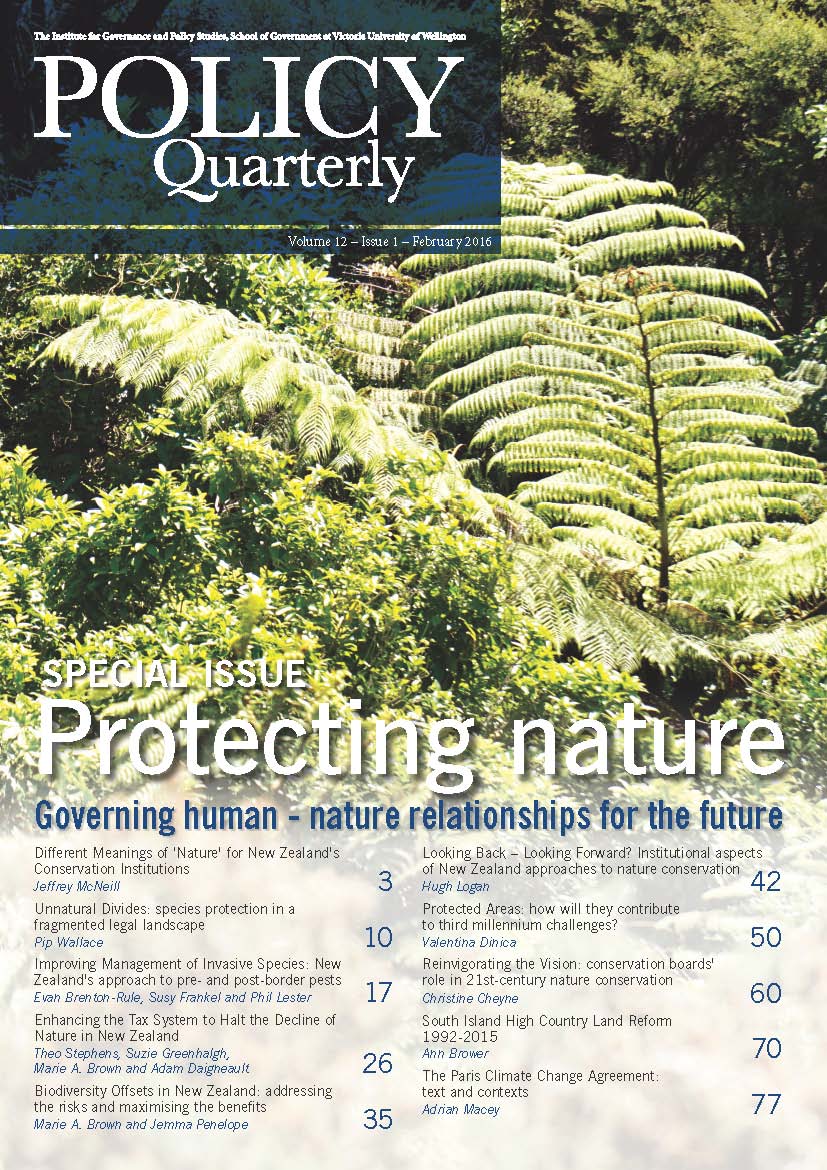Protected areas: how will they contribute to third millennium challenges?
DOI:
https://doi.org/10.26686/pq.v12i1.4578Keywords:
ecosystem services, types of ownership, United Nation’s Convention on Biological Diversity, ‘sustainable use lands’, National Parks Act, Strong sustainability, Planetary Boundary frameworkAbstract
Biodiversity is valued for its intrinsic worth and for its role in generating ecosystem services, such as soil fertility, clean air, renewable bio-resources, and water quality and availability. While biodiversity outcomes are generally pursued by nations for land in various types of ownership, this article focuses on protected areas on publicly owned lands. Currently, the internationally agreed protected area classification used by the United Nation’s Convention on Biological Diversity differentiates them in terms of nature conservation objectives and ‘compatible’ human uses. This suggests that protected areas can be arranged along a spectrum of protection stringency, from reserves and wilderness areas at one end, to so-called ‘sustainable use lands’ at the other.
Downloads
Downloads
Published
Issue
Section
License
Permission: In the interest of promoting debate and wider dissemination, the IGPS encourages use of all or part of the articles appearing in PQ, where there is no element of commercial gain. Appropriate acknowledgement of both author and source should be made in all cases. Please direct requests for permission to reprint articles from this publication to Policy-Quarterly@vuw.ac.nz.



